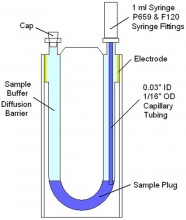Members Login

Channels
Special Offers & Promotions
Malvern
 Malvern Instruments has developed a new
diffusion barrier method to eliminate protein denaturation when measuring zeta
potential using electrophoretic light scattering. Utilising a U-shaped
disposable capillary cell, the new method delivers significant improvement in
the accuracy and repeatability of zeta potential results for proteins.
Ultimately, the method makes protein characterization with Malvern's Zetasizer
range even easier. A new application note explaining the technology and its
applications is available at www.malvern.com/protein-zeta-potential-appnote
Malvern Instruments has developed a new
diffusion barrier method to eliminate protein denaturation when measuring zeta
potential using electrophoretic light scattering. Utilising a U-shaped
disposable capillary cell, the new method delivers significant improvement in
the accuracy and repeatability of zeta potential results for proteins.
Ultimately, the method makes protein characterization with Malvern's Zetasizer
range even easier. A new application note explaining the technology and its
applications is available at www.malvern.com/protein-zeta-potential-appnote Zeta potential, which is a property of molecules and particles in suspension related to the surface charge, helps predict the stability of emulsions and colloids and also proteins in solution. Zeta potential measurement of proteins has always been challenging because of the tendency for aggregation to occur at the electrodes during the application of the electric field. When aggregates form, the measured result will be the zeta potential of the aggregates, which can be markedly different from the zeta potential of the native protein.
The diffusion barrier method protects the protein by keeping it away from the electrodes within a pool of buffer. This prevents aggregation and by eliminating this issue means the measured zeta potential is only that of the native protein. By eliminating protein aggregation, the diffusion barrier method improves the quality and accuracy of protein zeta potential measurement.
A multi-media presentation on the Diffusion Barrier method developed by Malvern Instruments is freely available through Malvern's online knowledge base at: www.malvern.com/protein-zeta-potential
Media Partners


